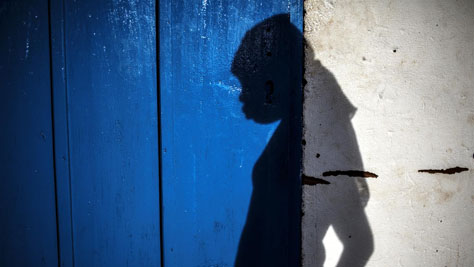Guiding Principles
 © UNICEF/NYHQ2012-0883/Brian Sokol
© UNICEF/NYHQ2012-0883/Brian Sokol
Basic principles
The chief guiding principle of the MRM is the best interests of the child - as articulated in the CRC - which must be a primary consideration in implementing all aspects of the MRM as well as response and prevention activities. Key principles that guide the MRM are the principles of impartiality, accuracy, objectivity and neutrality.
See Annex VII: MRM Guiding Principles [PDF] for specific details on how humanitarian principles guide the MRM's monitoring, reporting and response activities.
Ethical considerations
Ethical considerations should guide all MRM activities. These include the principles of 'do no/less harm', humanity, and sensitivity to local customs and culture. Monitoring, reporting and response should aim to do no harm to those whom MRM practitioners seek to assist and protect. For example, by gathering information within a particular community on violations of children's rights, humanitarian workers should not expose that community to any adverse consequence. Further, the monitoring, reporting and response should be undertaken with due regard and respect for culture and custom. There is also a need to be accountable to children and information providers as primary stakeholders; informing children and information providers of the purpose of the MRM and securing consent in the limited situations where it is appropriate. The safety and security of child victims and witnesses is paramount.
Monitors should respect cultural norms and customs on issues of sexuality and gender. Additionally, where sexual violence violations have occurred, allowing the child survivor and survivor family to play and active and informed role in the process is an important safeguard to ensure no further harm to the survivor.
The MRM process should not impose unnecessary burdens on children and families, and MRM staff should ensure that there is as little duplication of interviews being conducted as possible.
It is essential that the monitoring and reporting of violations be closely linked to appropriate responses regarding violations, whether it is a referral of a child to a service provider, for advocacy or other form of response. The MRM was envisioned to not only monitor and report but also to lead to an appropriate protection response. It is also essential that specific information gathered through the MRM is used ethically, protects the identity of child victims, and is used for the reasons as consented by the source of information.
Gender considerations
There are several ways in which gender considerations should be reflected in the design and implementation of the MRM. Information on the violation of children's rights should be disaggregated according to sex (girls and boys) during data collection.
Further, certain violations of children's rights may constitute gender-based violence, as the violation is particularly directed against children due to her/his sex or identity. MRM practitioners should be sensitive to the specific needs and coping mechanism of girls and boys, when dealing with all violations against children, but particularly those that may relate to a child's sexuality or self-image.
Interviews of child victims should also be conducted with due consideration to the sex of the interviewer and the victim.38
In respect of all violations, girls and boys have different ways of experiencing violations, different coping mechanisms and different needs. MRM staff need to be sensitive to this, as well as to the responses needed by children.
Child participation
Children cannot be directly involved with the MRM Task Force, although appropriate ways in which the MRM and youth or children's groups can interact may be cautiously explored, with due consideration to safety and security concerns. All efforts must be taken to ensure that the participation of youth and children's groups does not increase the risks of threats, attacks or other violence against the participants or communities.
The MRM must actively seek out the meaningful participation of children, both as victims and as agents of protection themselves.
Child victims should be fully informed when they are being interviewed by MRM staff. This means that they, and their families, are made aware of the purpose of the MRM and the options available to them post-interview, including any follow-up on activities or services which may be offered.
Children have, in certain situations and under supervision by responsible adults, been involved in advocacy, awareness and protection alert activities through their community activities and in schools. For example, children have undertaken community-based awareness activities in conflict-affected areas informing parents and children of where they can report in the event of recruitment of children or other grave violations. Children may also be consulted and their opinions sought on the effectiveness of protection efforts and the accessibility of protection programmes for children in affected communities.
Key messages - Guiding principles
- The best interests of the child and the humanitarian principles of humanity, neutrality, impartiality, and do no or less harm guide the implementation of the MRM.
- Respect for culture and custom.
- Victims need a response - not just seen as information providers.
- Protect the identity of the child and other information providers.
- Be sensitive to the specific needs of boys and girls.
Further readiing - Guiding principles
- Annex VII: MRM Guiding Principles [PDF]
- Guiding Principles for Human Rights Field Officers Working in Conflict and Post-Conflict Environments
- Sexual and Gender-Based Violence against Refugees, Returnees and Internally Displaced Persons: Guidelines for Prevention and Response, UNHCR [PDF]
- IASC Gender Handbook
38 For further information, see the IASC Gender Handbook.